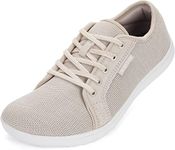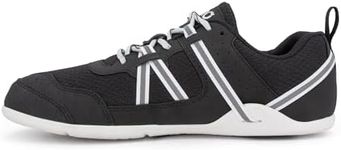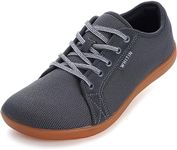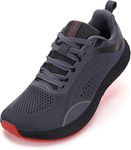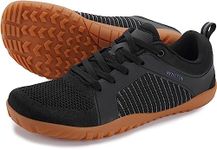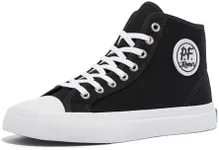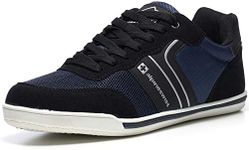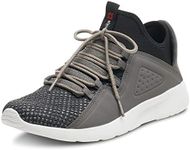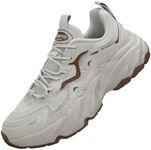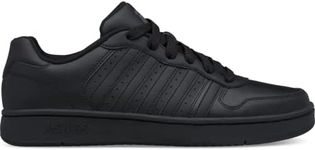Buying Guide for the Best Minimalist Shoes
Minimalist shoes are designed to provide a more natural running or walking experience by mimicking the feeling of being barefoot while still offering some protection for your feet. When choosing minimalist shoes, it's important to consider several key specifications to ensure you get the best fit for your needs. These specs will help you understand the different features and how they can impact your comfort and performance.Heel-to-Toe DropThe heel-to-toe drop is the difference in height between the heel and the forefoot of the shoe. This spec is important because it affects your running or walking gait. A lower drop (0-4mm) promotes a more natural foot strike, often landing on the midfoot or forefoot, which can reduce the risk of injury. Higher drops (5-12mm) are more common in traditional running shoes and can encourage heel striking. For minimalist shoes, look for a drop of 0-4mm to get the most natural feel. If you're transitioning from traditional shoes, you might want to start with a slightly higher drop and gradually move to a lower one.
WeightThe weight of the shoe is crucial because minimalist shoes aim to be as light as possible to mimic the barefoot experience. Lighter shoes (under 200 grams) allow for more natural movement and can improve your agility and speed. Heavier shoes (over 200 grams) might offer more cushioning and support but can detract from the minimalist experience. Choose a weight that feels comfortable for your activities; lighter for running and more dynamic movements, and slightly heavier if you need a bit more support for walking or casual wear.
FlexibilityFlexibility refers to how easily the shoe bends and twists. This is important because a flexible shoe allows your foot to move more naturally, which can improve balance and strengthen foot muscles. Minimalist shoes should be highly flexible, allowing you to bend them easily with your hands. If you need more support or are new to minimalist shoes, you might start with a shoe that has moderate flexibility and gradually move to a more flexible option as your feet adapt.
Toe BoxThe toe box is the front part of the shoe where your toes sit. A wide toe box is important in minimalist shoes because it allows your toes to splay naturally, which can improve balance and reduce the risk of blisters and other foot issues. Look for shoes with a wide and roomy toe box, especially if you have wider feet or plan to use the shoes for activities that require a lot of toe movement, like running or hiking.
Sole ThicknessSole thickness, or stack height, refers to the thickness of the sole under the foot. This spec is important because it affects the level of ground feel and protection. Thinner soles (under 10mm) provide a better ground feel, allowing you to sense the terrain and adjust your stride accordingly, which can improve balance and proprioception. Thicker soles (over 10mm) offer more cushioning and protection but reduce ground feel. Choose a sole thickness based on your comfort level and the type of terrain you'll be on; thinner for more natural feel and thicker for rough or rocky surfaces.
MaterialThe material of the shoe affects its breathability, durability, and comfort. Common materials include mesh, which is lightweight and breathable, and synthetic or natural leather, which can offer more durability and protection. For minimalist shoes, breathable materials like mesh are often preferred to keep your feet cool and comfortable. However, if you need more protection or plan to use the shoes in rough conditions, you might opt for more durable materials. Consider your typical use and environment when choosing the material.

